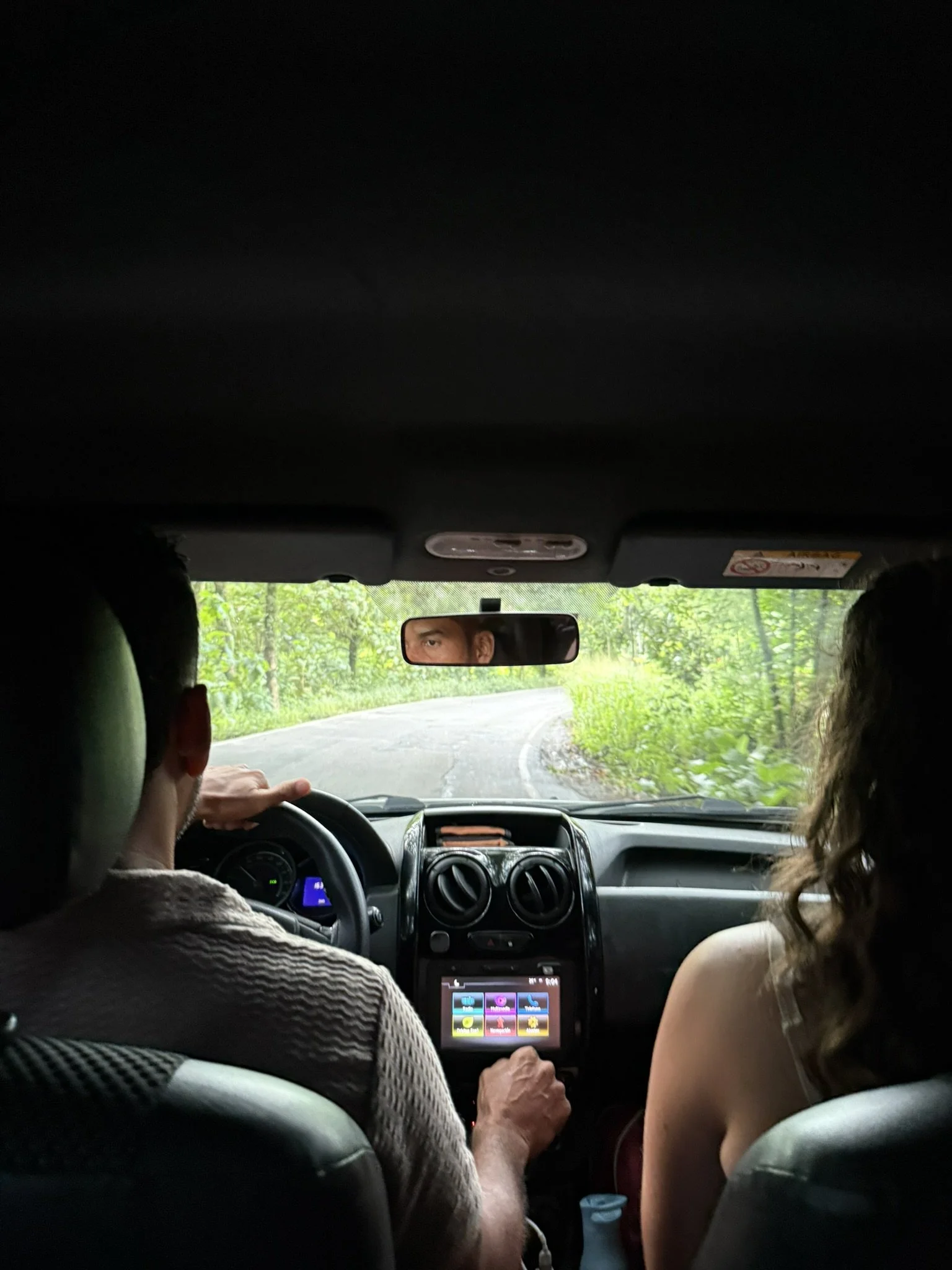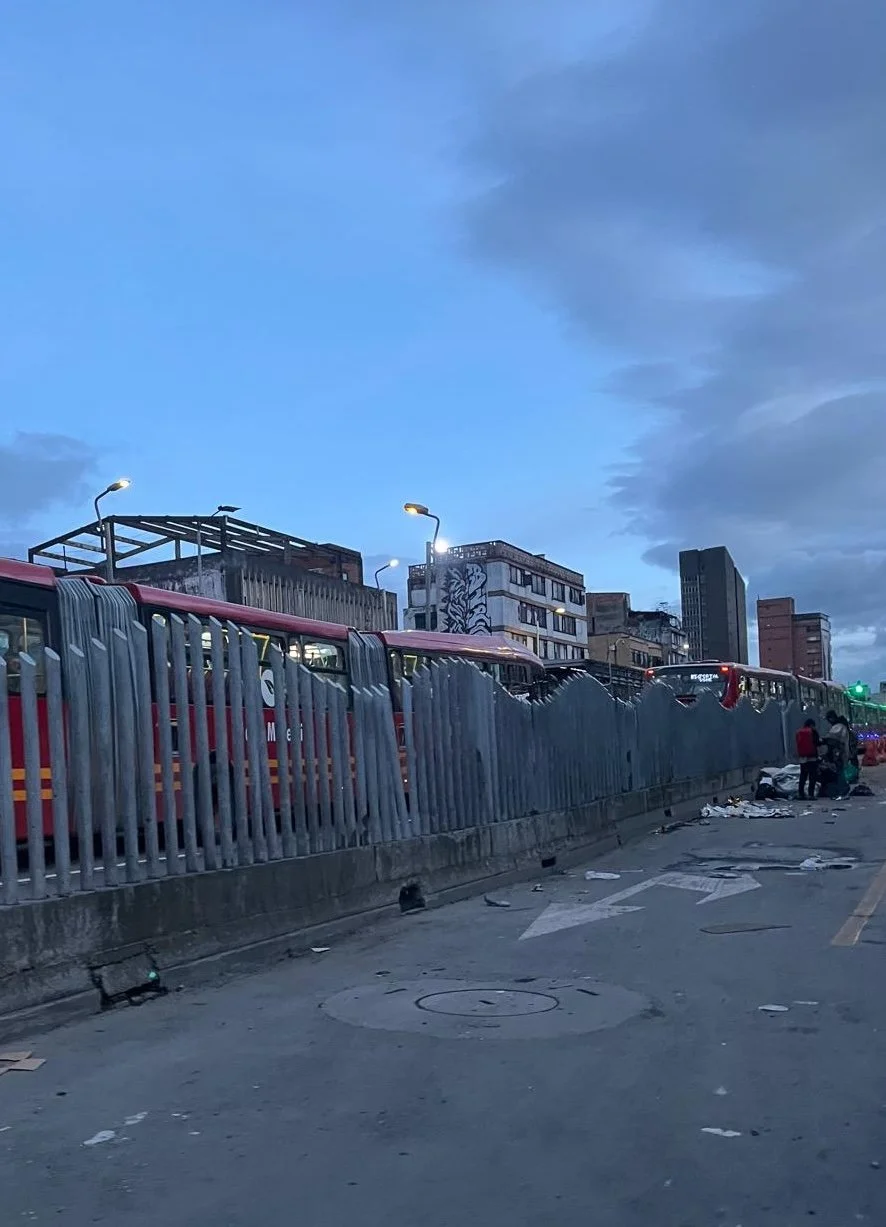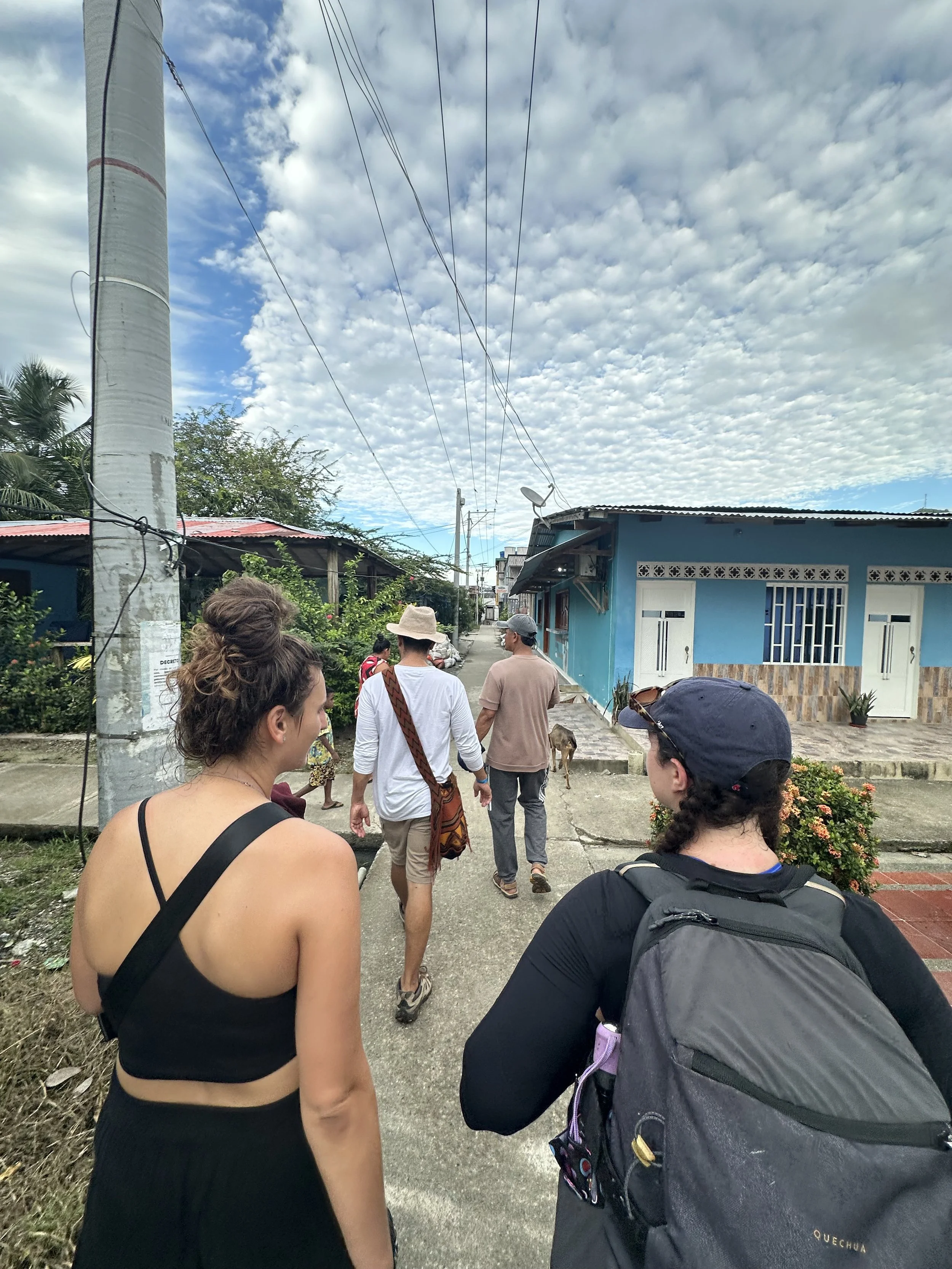
Securitization without Security:
How Migration is Shaping the Global Order
notes from the field entry #6
Navigating Dangerous Spaces
Author: Sara Sharpe
Location: Colombia
Date: July 20, 2025

In Colombia, the notions of safety and security are contingent upon “guides:” locals who have the knowledge, social capital, and tact to navigate challenging spaces traversed by migrants and researchers alike. Across our fieldwork, the figure of a “guide” took many forms. For us, guides offered protection in environments where outsiders are not always welcome. For migrants, guides are often a necessity and required. Their safety, mobility, and survival depend on paying someone to lead them through uncertain and often treacherous terrain. Whether encountered in Bogotá, Capurganá, or the Darién Gap, the guide was never a neutral figure. They could be a protector, a gatekeeper, or, at times, a threat.

In Santa Fe, Bogotá, one of the city’s most dangerous neighborhoods (see Entry #1), our sense of safety began with a chance encounter. We met the director of a local youth arts center standing outside. He looked at us with concern and immediately asked if we knew where we were and why we were walking alone. From that moment on, he took it upon himself to ensure we were safe. He insisted we not walk alone, introducing us to trusted community members to accompany us through the area. When we returned the next day, he again welcomed us with open arms. While walking around the neighborhood, he didn’t just accompany us for protection; he helped us understand the place and migrants living there from the inside out. While our surroundings were hostile, his presence shifted our experience. Without him, our time there would have been unproductive and even more high-risk. His social capital in the community allowed us access to people who wouldn’t have trusted us as outsiders in a dangerous place.

In Capurganá, we were only able to speak freely with residents because we were accompanied by a fixer, a respected member of the community known for vetting outsiders before bringing them in. His presence created a sense of safety that extended well beyond logistics. People recognized him, trusted him, and by extension, gave us their time and their stories. He helped guide conversations, clarified our intentions, and knew when to step in or step back. His familiarity with local dynamics helped us navigate sensitive topics and avoid missteps. He shaped whom we talked to, what we were told, and how we were received. He was more than a facilitator; he was a social guarantor.
In the thick of the Darién jungle, the figure of the guide becomes far more complicated. Guides are not just helpful to migrants, they are essential. Here, on the Colombian side of the jungle, guides offer the only possible way across one of the most dangerous migration routes in the world. They know the physical landscape, the shifting dangers, and what to avoid. But trust in the Darién is provisional. As one key informant told us, “el mismo guía que te ayuda puede ser tu agresor” (the same guide who helps you can also be your aggressor). Trust is both necessary and dangerous.

Some guides engage in practices that stretch the boundaries of what “guidance” entails, offering not just geographical routes but also assistance with documentation and bureaucratic hurdles. One informant showed us a manila envelope filled with what looked like receipts. She explained that these passes are for people eligible to enter Colombia legally without a passport. Ironically, when migrants purchase and use fake versions of these documents, it can actually obstruct their movement. Rather than facilitating travel, the falsified paperwork raises red flags that prevent them from continuing along their route. It is not clear whether the guides are intentionally misleading the migrants or simply offering what they see as an added service, but the effect is the same. A document that was supposed to open a door ends up closing it.
Whether in urban neighborhoods, coastal towns, or dense jungle, the people who guided us and those who guide migrants held more than just local knowledge. They mediated access and shaped how vulnerability, uncertainty, and protection were experienced. The figure of the guide highlights that safety and movement are not just about physical terrain, but about social terrain. Navigating dangerous spaces depends as much on who walks beside you as on the path itself.
